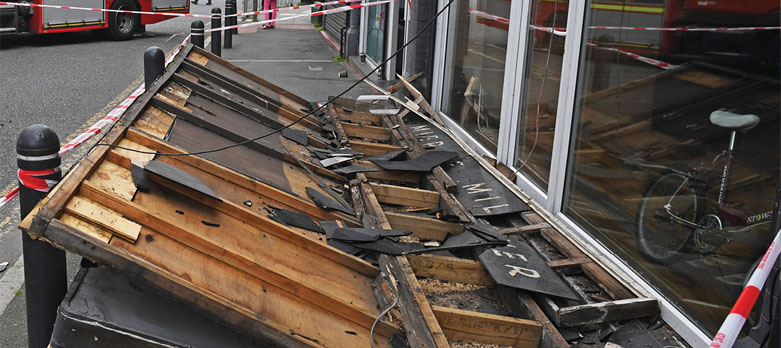
In previous blog posts we have made references to various pieces of legislation around retail signs. This is because looking after your signage is not just about improving sales but is also a legal requirement. There are three main pieces of legislation that address your signage, so we thought we would look at these in more detail. For the first in our series about signage, law and your duties we’ll look at The Health And Safety At Work Act 1974 (HASAW).
What is The Health & Safety At Work Act?
The growth of industry in this country brought with it huge changes in how people work. But it also put people of risk of injury or death. At first, any steps to make industries safer were done on a voluntary basis. Later on some workplaces, such as factories mines or railways, were subject to inspection. Sadly, this was not altogether successful. Workplaces remained highly dangerous places and recorded injuries and deaths continued to climb. Despite the likes of The Factories Act, workplaces remained highly dangerous right up into the Sixties, when injuries and deaths would surpass the half a million per year mark.
Into this environment we then see the Health & Safety At Work Act come in effect. It was prompted by the Robens Report into occupational health and safety. This by the way is the same Lord Robens who was Chairman of the National Coal Board during the Aberfan disaster in 1966.
Why Is The Act So Important?
The Act itself was something of a game-changer. Rather than having the narrow focus of legislation on specific, dangerous industries such as The Coal Mines Regulation Act or The Factories Act, HASAW was much more wide-ranging. Plus, the Act moved away from being heavily prescriptive. Gone were stipulations about sizes of guards of specific types of machinery, and instead a more general duty of care was adopted. And importantly, HASAW also enshrined in law that a workplace had a duty of care in protecting the public from hazards.
Where Does The Act Apply To Signage?
As mentioned above, HASAW is wide in scope. HASAW is deliberately positioned to make it applicable to the workplace as a whole. This was a move away from being concerned with narrow details that could make the Act very quickly obsolete. The Act is therefore able to respond to almost any area and situation. A good example here is Section 2 of HASAW which states the following:
“It shall be the duty of every employer to ensure, so far as is reasonably practicable, the health, safety and welfare at work of all his employees.”
Section 2(2) expands on this with the following:
“(d) so far as is reasonably practicable as regards any place of work under the employer’s control, the maintenance of it in a condition that is safe and without risks to health and the provision and maintenance of means of access to and egress from it that are safe and without such risks;
(e)the provision and maintenance of a working environment for his employees that is, so far as is reasonably practicable, safe, without risks to health, and adequate as regards facilities and arrangements for their welfare at work.”
As you can see, HASAW positions the law to cover any aspect of the workplace environment. Which therefore puts signage within the remit of the Act – signs are fixtures to a building and as such are part of the workplace.
When Might You & Your Signs Break The Law?
You may be forgiven for thinking that your signage is breaking the law when it falls down. That’s understandable, your sign may look fine one day and then most certainly not the next. However, the Act does not limit itself to something going wrong with your signage. Your sign only has to present a risk of harm for an offence to be committed. In other words, it doesn’t need to actually fall down and hurt someone – just the fact it is deemed to be unsafe means you are committing an offence.
So how is your signage deemed to be ‘unsafe’? To help illustrate this here is a short list of issues we find when inspecting signage:
- Incorrect fixings used during installation
- Inferior quality sub-fascia/substrate, making it unable to support the weight of the sign
- Water ingress resulting in the sub-facia /substrate deteriorating
- Damaged or missing weather proofing (flashing)
- Delaminating chemically fixed/bonded signage materials, caused or exacerbated by seasonal expansion and contraction leading to catastrophic failure
- Damage and / or vandalism to the signage or the sub-fascia / substrate
- Blocked guttering / build-up of leaves, moss and other debris on top of signs

Also, just because you have some documentation that claims your signage is all fine does not get you off the hook. What you must have is proof you are actually taking care of your signs. That means having a maintenance plan with records to show inspections and work done to keep your signage safe.
Penalties
When it comes to signage, law and your duties we have heard some confuse the Act with being either criminal or civil law. To clarify, breaking The Health & Safety At Work Act is a criminal offence. This means the resulting punishment will vary in light of the seriousness of the offence, and can be either:
- Verbal or written advice
- Issued with a notice of improvement or prohibition
- Prosecution
You may also be charged with costs if the Health & Safety Executive have to step in and assist you to sort out issues with your signage.
If you break health and safety laws then you may be found to be negligent under civil law. Someone who is injured by your signage would use civil law to make a claim for compensation against you.
That is a very brief look at how the Health & Safety At Work Act 1974 is concerned with your signage. The next part of our look at signage, the law and your duties will cover maintaining your signage.